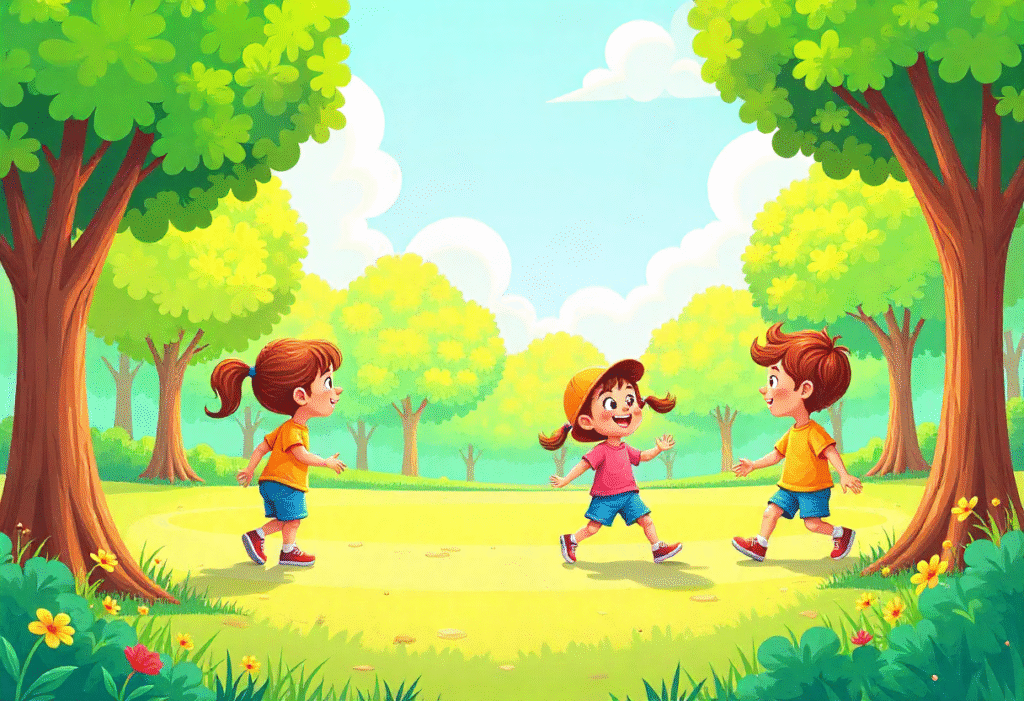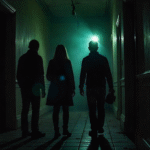Toony refers to a highly stylized, exaggerated, and playful artistic approach often rooted in traditional cartoon aesthetics. Think bold outlines, bright colors, simple shapes, and expressive characters. Unlike hyper-realistic or abstract forms, toony designs emphasize emotion, energy, and simplicity.
Used in both 2D and 3D media, the term “toony” spans industries—from entertainment to marketing. Its charm lies in its ability to communicate complex emotions through whimsical visuals.
History of the Toony Style
Toony art has its roots in the golden age of animation. Early Disney and Warner Bros. cartoons set the standard for what we now recognize as “toony.” These early works prioritized fluid motion, exaggerated expressions, and storytelling simplicity.
Over the decades, the style has diversified. While traditional cel animation gave way to digital techniques, the core principles of toony art—fun, exaggeration, and appeal—remained intact.
Key Characteristics of Toony Art
Toony art is easy to spot, thanks to a few signature traits:
-
Exaggerated Features: Large eyes, expressive mouths, and over-the-top body language.
-
Vibrant Colors: High contrast, bold palettes, and no fear of color clashing.
-
Simplified Shapes: Basic geometry over complex anatomy—appealing to all ages.
-
Playful Line Work: Thick, flowing lines that give characters energy and bounce.
Toony in Animation
Animation is perhaps the most well-known home of toony aesthetics. Shows like SpongeBob SquarePants, Looney Tunes, and The Amazing World of Gumball showcase how effective this style can be in conveying humor, action, and emotion.
Modern software like Toon Boom Harmony and Adobe Animate make it easier than ever for artists to craft toony sequences that feel hand-drawn and alive.
Toony in Character Design
Character designers love the toony approach because it offers so much flexibility. Need to express mischief? Exaggerate the eyes and tilt the eyebrows. Want to show surprise? Just drop the jaw and raise those brows! It’s this elasticity that allows toony characters to resonate so deeply with audiences.
Even video games have adopted the toony style to appeal to younger demographics or stand out from hyper-realistic titles.
Toony vs. Realism in Art
Realism seeks accuracy. Toony seeks impact.
Where realism replicates the real world, toony simplifies it for clarity and fun. Each has its strengths. Realism fits well in documentaries or simulations, while toony shines in humor, storytelling, and emotional connection.
And let’s not forget: toony doesn’t mean immature. It’s an intentional artistic choice to create engagement through simplicity and style.
Toony in Branding and Marketing
Brands want to be memorable, relatable, and fun. Toony delivers all three. Companies like Kool-Aid, Cheetos, and even Duolingo have leaned into toony mascots to build emotional resonance with consumers.
A toony mascot can communicate playfulness, friendliness, and trust. These visuals humanize a brand in a world where corporate identities often feel cold and distant.
Toony Illustrations in Social Media
Instagram, TikTok, and YouTube are brimming with toony content. Creators use filters, AR lenses, and toony avatars to elevate their content. These exaggerated visuals cut through the noise of endless scrolling, creating instant appeal.
Toony styles, by their nature, invite laughter and joy—two emotions social platforms thrive on.
Tools for Creating Toony Art
Here are a few popular tools used to create toony visuals:
-
Procreate: Perfect for toony illustrations on iPad
-
Clip Studio Paint: Ideal for comic and manga-style cartoons
-
Toon Boom Harmony: Industry standard for professional 2D animation
-
Blender (Grease Pencil): Great for 2D/3D hybrid cartoon animation
Artists should focus on gesture, exaggeration, and color when designing in a toony style.
Toony in Children’s Media
Children’s books and educational videos often favor toony art because of its clarity and appeal. Simple visuals help children focus on stories and concepts without distractions.
Shows like Peppa Pig or Dora the Explorer prove that toony art can educate just as effectively as it entertains.
Toony in Comic Art
Comic books and graphic novels have long embraced the toony aesthetic. Whether it’s western comics like Calvin & Hobbes or Japanese manga with chibi-style characters, exaggeration plays a key role in visual storytelling.
Toony styles enhance punchlines, express emotions better, and guide the reader’s eye more easily than overly complex designs.
The Psychology Behind Toony Appeal
Psychologically, humans are drawn to round, simplified faces. They appear less threatening and more relatable. Toony art capitalizes on this natural preference to form immediate emotional connections.
Cartoon faces tap into our empathy, much like emoji. They’re designed to be “read” instantly.
Toony in 3D Animation
Thanks to software like Blender, Maya, and Cinema 4D, artists now bring toony designs into three dimensions. The result? Films like The Mitchells vs. The Machines or Hotel Transylvania—3D movies with unmistakably toony personalities.
3D gives volume and depth to already expressive designs, making them even more dynamic.
Toony in Memes and Pop Culture
Let’s face it—memes love toony. Whether it’s distorted reaction faces, rage comics, or sticker packs, the exaggerated emotion and style of toony art fits perfectly with internet humor.
Its simplicity makes it easily replicable and endlessly adaptable.
Toony for Web and UI Design
Even interfaces are going toony! Websites and apps now use toony illustrations to communicate user actions, celebrate achievements, or guide users through tutorials.
This humanizes digital experiences, reduces user anxiety, and increases retention.
Famous Toony Artists and Studios
Some pioneers of the toony style include:
-
Tex Avery: Known for outlandish expressions and comedic timing
-
Craig McCracken: Creator of The Powerpuff Girls and Foster’s Home
-
Genndy Tartakovsky: Director of Hotel Transylvania, master of stylized animation
Studios like Cartoon Network, Nickelodeon, and Laika have contributed greatly to the popularity and evolution of toony aesthetics.
Toony Art for NFTs and Digital Collectibles
NFT projects like Doodles and Cool Cats bank heavily on the toony aesthetic. Their simplified yet unique styles help them stand out in a sea of complex or photorealistic avatars.
Collectors are drawn to their personality, consistency, and nostalgic appeal.
Toony for Branding in Gaming
Games like Fortnite, Fall Guys, and Cuphead use toony styles to develop brand identity. These visuals are not just eye-catching—they also create a welcoming vibe that appeals across age groups.
Toony design gives developers flexibility in character actions, expressions, and creativity.
Toony as a Visual Storytelling Language
At its core, toony is more than a style—it’s a storytelling method. Through exaggerated movements and expressions, stories become instantly engaging and emotions universally understood.
That’s why it continues to thrive across mediums.
How to Learn the Toony Style
If you’re new to toony art, here’s how to get started:
-
Study Classics: Watch old cartoons and analyze the line work, motion, and color.
-
Draw Daily: Practice by sketching exaggerated poses and facial expressions.
-
Join Communities: Reddit’s r/CartoonArt or DeviantArt have active cartoonist circles.
-
Take Courses: Platforms like Skillshare and Udemy offer focused toony drawing courses.
Also read :
Unveiling the Mystery: Facts About the Stephen King’s Novel “Mr. Mercedes”
FAQs
What does “toony” mean in art?
Toony refers to a cartoon-like, exaggerated, and stylized approach in visual art, characterized by bold colors and expressive features.
Is toony art only for kids?
Not at all. While it’s popular in children’s media, toony art is widely used in branding, gaming, and digital collectibles aimed at all age groups.
Can I learn to draw in a toony style?
Yes! With practice, tutorials, and a focus on exaggeration and expression, anyone can learn the toony style.
Is toony the same as comic style?
They overlap but aren’t identical. Comic styles may vary from realistic to toony, while toony always emphasizes simplification and exaggeration.
Why is toony art effective in marketing?
Toony visuals create emotional connections quickly, enhance brand friendliness, and boost recall through unique, playful imagery.
Are there software tools specifically for toony animation?
Yes—Toon Boom Harmony, Procreate, and Blender’s Grease Pencil are excellent for creating toony animations and illustrations.
Conclusion
From its roots in vintage cartoons to its contemporary use in NFTs and social media, the toony style continues to charm and connect. It’s not just about big eyes or wild colors—it’s about communication. It’s the art of saying more with less. And in a visually noisy world, that might just be its greatest superpower.



